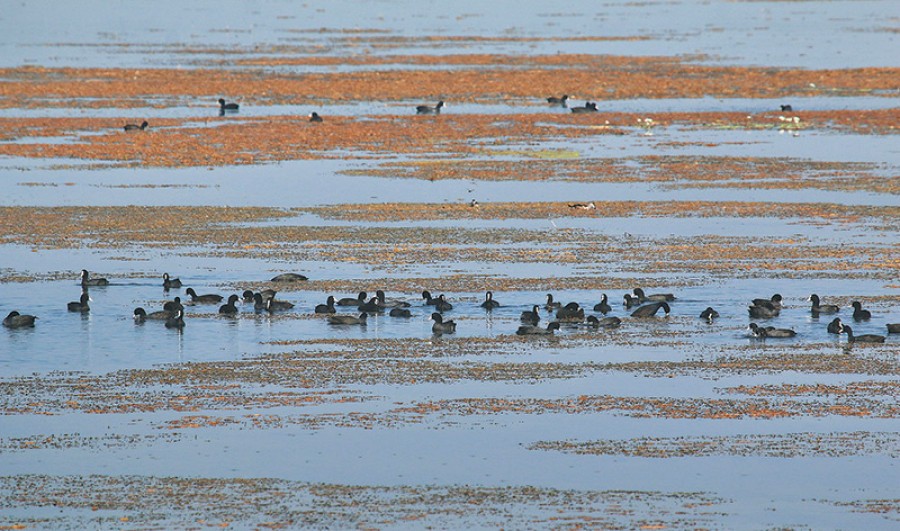130 species of migratory birds arrives in Nepal

By A Staff Reporter
Kathmandu, Nov. 13: Around 130 species of winter migratory birds have arrived in Nepal to avoid the extremely cold winter in the Northern hemisphere.
According to Dr. Hem Sagar Baral, an ornithologist, 150 species of birds have already arrived in Nepal considering their arriving trend this season.
Of them, 130 species of the birds have been recorded in several parts of the nation till the date, he said.
The winter migratory birds have started arriving in Nepal from August and September in the jungles, grasslands and wetlands of the nation to spend the winter. The migration will continue till the end of November.
The arrival trend of the migratory birds is gradually declining since the 1980s-90s. The number of migratory birds is declining and some species of migrant birds have stopped coming here, he said.
“The number of migrant birds has declined almost by half over the years if we compare with their arrivals in the 1980s,” he said.
Ornithologist Baral said that the number of migratory birds is declining worldwide. Destruction of their habitats, hunting, water, air and other pollution and climate change have led to the decline in the population of the migrant birds.
Most of the migrant birds arrived in Nepal from the Siberian region of Russia, China, Mongolia, Korea and central Asia. These guest birds are found in the jungles, grassland, river bank and several wetlands of the nation.
Duck species like--mallard, ruddy shelduck, gadwall, Eurasian teal, green shank, thrushes, fly catcher, booted eagle and other migrated birds species come to Nepal in the winter season.
Grey headed lapwing, common teal and the Eurasian wigeon duck species can be sighted at Taudaha and Bagmati corridor along Chobhar up to mid-winter season.
Two kinds of migratory birds arrive in Nepal--wetland birds and terrestrial birds.
The terrestrial birds are divided into forest birds and grassland birds. Duck species live in the wetland so they can be seen easily.
“But the terrestrial birds, which live in the forests, cannot be counted. That’s, why the number of the forest birds is always higher than the wetland birds,” Baral said.
Jagdishpur reservoir in Kapilvastu, Ghodaghodi Lake in Kailali, Koshi Tappu Wildlife Reserve, the Karnali, Narayani and Koshi River area, among others, are now full of migratory birds.
Some species of duck fly up to 9,395 metres and weight up to 2.5 kg.
Baral said, Taudaha and the Bagmati River bank of Chovar are the suitable sites to observe the migrated duck species of winter season for the people in the Kathmandu Valley.
The number of migratory birds here is declining due to the rapid construction of concrete structures and other development works around the wetlands.
Altogether 888 species of birds have been recorded in Nepal. Of them, 168 bird species are under threat, he informed.
Recent News

Do not make expressions casting dout on election: EC
14 Apr, 2022
CM Bhatta says may New Year 2079 BS inspire positive thinking
14 Apr, 2022
Three new cases, 44 recoveries in 24 hours
14 Apr, 2022
689 climbers of 84 teams so far acquire permits for climbing various peaks this spring season
14 Apr, 2022
How the rising cost of living crisis is impacting Nepal
14 Apr, 2022
US military confirms an interstellar meteor collided with Earth
14 Apr, 2022
Valneva Covid vaccine approved for use in UK
14 Apr, 2022
Chair Prachanda highlights need of unity among Maoist, Communist forces
14 Apr, 2022
Ranbir Kapoor and Alia Bhatt: Bollywood toasts star couple on wedding
14 Apr, 2022
President Bhandari confers decorations (Photo Feature)
14 Apr, 2022











